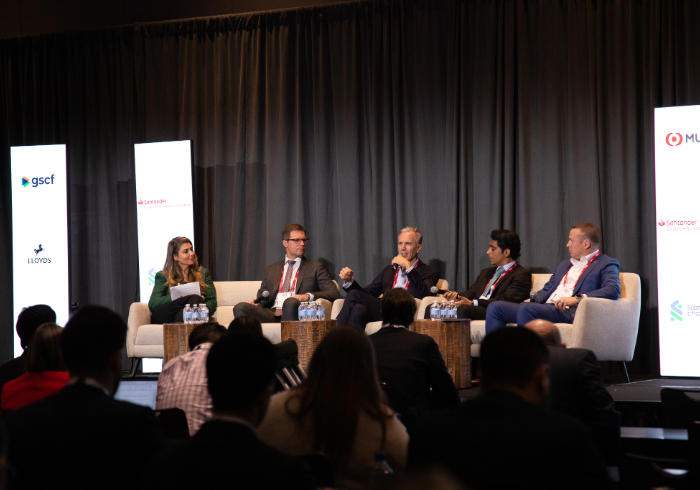With a deliberate focus on small and medium enterprises (SMEs) and special provisions to help them integrate into the global supply chain, could the TPP be a chance to bring trade simplicity to small American firms? Eleanor Wragg reports.
After almost six years of negotiations, the Trans-Pacific Partnership (TPP), finally signed by the United States along with 11 other countries on February 3, could very well be the world’s most inclusive trade deal yet.
In a statement, US trade representative Michael Froman hailed the agreement as “the largest tax cut on American exports in a generation, slashing over 18,000 individual taxes on the products American manufacturers make, American farmers grow, and American innovators create”. But beyond the blowsy rhetoric, what SMEs actually get out of the deal, beyond the tariff cuts benefiting all exporters, is a commitment from each signatory government to set up a special committee with the sole purpose of promoting TPP trade opportunities.
Each TPP party has also agreed to create a website which will provide easily accessible information to SMEs about the agreement and how they can take advantage of it. The idea is to boil down all the relevant information into single user-friendly sites with information on standards and regulations around areas such as intellectual property, foreign investment, employment and taxation. There will also be reviews of the effectiveness of this information in encouraging SMEs to take advantage of the TPP, and it’s expected that there will be government-led trade assistance and training programmes for small firms.
Breaking down barriers to trade
While SMEs account for a third of US goods exports, fewer than 5% of small American firms are currently exporters, and most of these tend to do so to only one country – usually to NAFTA partners and close neighbours Canada or Mexico. Without the resources and support networks of larger firms, challenges
such as high duties, non-tariff barriers and the intricacies of foreign business regulations can prove insurmountable to small entrepreneurs considering participating in international trade. And even where there are already free trade agreements in place, such as with countries like Chile, Peru and Australia, each deal has conflicting rules of origin, making it difficult and time-consuming for small businesses to figure out how to take advantage of them.
The TPP, with its transparent and easily-accessible information on foreign laws, removal of customs restrictions, and its rules of origin provisions, which are designed to ensure that only goods that originate in the TPP region get preferential treatment, has the potential to act as a catalyst for US firms to enter into regional supply chains. The information-sharing practices around customs procedures will give firms a leg-up when it comes to getting over non-tariff barriers and help get their products cleared through customs quickly and efficiently – freeing up working capital
and speeding up time to market.
“For SMEs, the biggest benefit the TPP presents is that it is designed to make cross-border trade less daunting and much more accessible for them to expand their business and sales into the offshore markets,” says Daniel Son, head of the US trade team at Wells Fargo. “From that perspective, it is a very positive movement, so SMEs can at least start considering how they might want to engage in cross-border trade, particularly from a US export point of view.”
SMEs can also benefit from access to sectors they were previously unable to compete in due to public sector involvement, as the deal prohibits regulation
by a government entity that is also a competitor.
It also prohibits governments from subsidising state-run entities in competitive industries. An interesting chapter on government procurement also takes steps
to do away with the preference to “buy local” for goods and services, opening up, in theory, new tenders for suppliers.
Then there are the new, lower tariffs. In 2014, the US exported US$89bn in automotive products, US$56bn in machinery products and US$36bn in information and communication technology to TPP countries. The TPP agreement will cut tariffs on each of these by 70%, 59% and 35% respectively. It will also remove tariffs of up to 40% on US poultry products, 35% on soybeans, and 40% on fruit exports.
The agreement has been well-received by the American agricultural sector, with Chip Bowling, president of the National Corn Growers Association, announcing that it would “give America’s farmers and ranchers greater access to the Asia Pacific region, bringing more American grains, meat, and dairy to
the rest of the world”. The National Council of Textile Organisations also cheered the deal, adding that “many of the US textile industry’s key objectives have been met”.
Are we there yet?
But for an SME with little experience in locating new prospects, partners and markets, does the TPP offer enough of an incentive to take the leap into exporting?
From the perspective of their banking partners, it’s still too soon to tell. “While some clients are beginning to ask about the TPP, most haven’t really begun to delve into the details of what it could mean for their business,” says Jonathan Heuser, managing director and head of global trade commercial banking at JP Morgan. While he concedes that reducing trade barriers has the potential to make international suppliers and new markets for sales far more accessible to SMEs, he cautions that any trade agreement is a two-way street – meaning that reduced tariffs and administrative barriers to new markets also mean reduced barriers to competition coming from abroad. “TPP is an opportunity, but an opportunity that US companies really cannot afford to ignore. So far, most of the information we’ve seen in the market is high-level and conceptual – interesting, certainly, but difficult to act on.” He adds that the bank is planning more specific educational outreach as the details of the deal become clearer.
Rob Stigall, director and sales manager of global trade and supply chain finance at Bank of America Merrill Lynch, says that he anticipates SME clients
will look to their banks for assistance in several areas: “One of these is the potential need for export working capital financing. As companies win new contracts overseas and begin to appreciate the stress that that can create on their working capital cycle, they start to require some sort of financing. Once exports turn around and begin to grow again, fostered in part by this type of agreement, we are expecting to see an increase in demand for export working capital financing. Another area of need that companies will have is to mitigate the risk of not receiving payment
for the products they export.”
Son adds that Wells Fargo is already involved in “quite specific” discussions with its SME clients around the type of risk mitigation tools and onboarding support it can provide.
An internet without borders
Establishing export markets abroad is a challenging task for any SME, although thanks to digital tools such as internet storefronts and online marketplaces, the playing field is gradually being levelled. According to e-commerce site eBay’s own research, 97% of its commercial sellers – those with annual sales of US$10,000 and above – are exporters, the vast majority of which are selling to five or more countries. Most of them are small businesses. According to US think tank Progressive Policy Institute (PPI), the TPP would support the continued growth of this digital trade by ensuring that countries allow commercial data flows and do not succumb to restrictions such as so-called “data localisation” rules that force data or servers to be located in a certain jurisdiction – a boon for digitally-enabled SMEs looking for new markets.
But it’s not just internet sellers who will do well out of the deal. Tracy Rafter, founding CEO of BizFed, an alliance of 150 business groups in LA County, is optimistic about the impact the TPP will have on the trade and logistics industry, which employs more people in Southern California than any other sector. “Southern California serves as the largest transportation node in the US. 40% of the nation’s containers pass through the twin ports of LA and Long Beach and for every additional US$1bn in exports shipped through US seaports, 15,000 good paying jobs are created.” With nearly 1,900 California businesses being subsidiaries of companies based in TPP countries, she sees the growth of important backlinks which will lead to more business investment and job creation in the state. “In 2011, trade with TPP countries supported an estimated 1.7 million jobs in California. TPP will build on these trade and investment relationships, and support the Californian jobs that depend on them.”
Is free trade enough?
Not everyone is convinced, however, of the transformative benefit of free trade for US SMEs. Public Citizen, a US-based NGO, reports that under the last big-ticket deal, the North American Free Trade Agreement (NAFTA), the country’s small firms’ exports to Mexico and Canada grew less than half as much as those of large firms. It also points out that under the more recent South Korea free trade agreement, US small businesses saw their exports to the Asian nation decline by 19%, while those of large firms fell by just 3%.
However, industry players advise looking at the bigger picture around free trade deals, particularly when smaller firms are involved. “There are still some significant headwinds with weaker strands of economic activity in many of the key markets around the world. The developing markets, led by China, are seeing relatively weak economic growth which makes it difficult, along with the stronger dollar, for our clients to be competitive and find new business opportunities, but that is going to be short-lived. A major agreement like the TPP will have longer-term fundamental implications that will create new opportunities for companies over time,” says BofAML’s Stigall.
“One thing that people forget is where we are with the US dollar vis-à-vis the local markets,” adds Wells Fargo’s Son. “From a US SME perspective in particular, the competitors outside of the US who are also selling similar types of products are in Europe, for example, where their currency has depreciated, and that is impacting the ability of US exporters to sell more.”
While the current macroeconomic volatility and economic uncertainty may mean now is not the best time for an SME to dive into internationalising its operations, the TPP is a positive movement in fostering and encouraging additional cross-border trade.
What the TPP does for America’s smaller exporters is emphasise their role in global trade – the first time this has been done in a trade deal – and lay the ground for them to operate in a truly global fashion. What they need now is real-world assistance to make the process more accessible.








